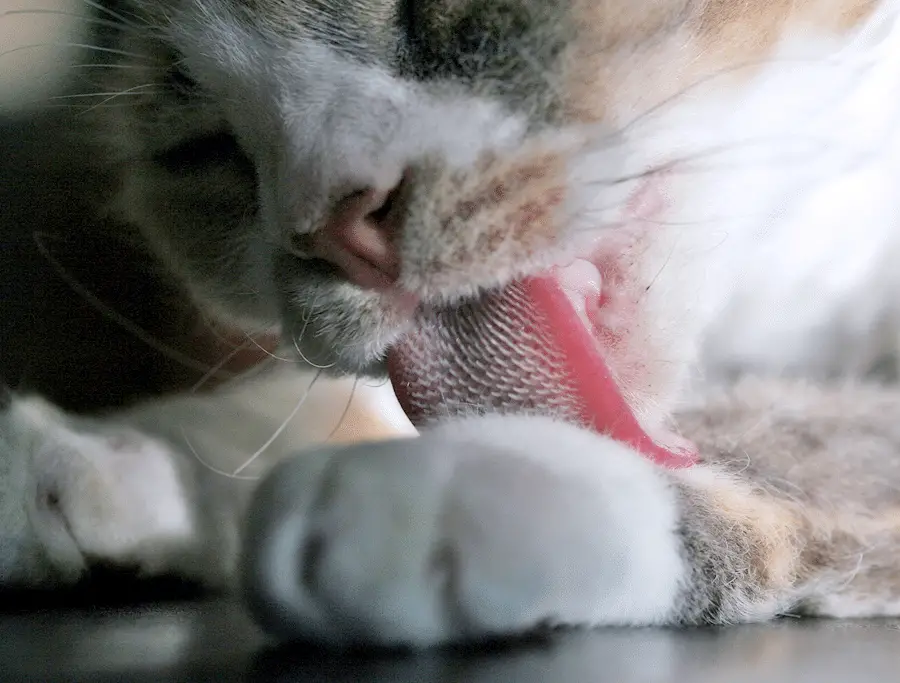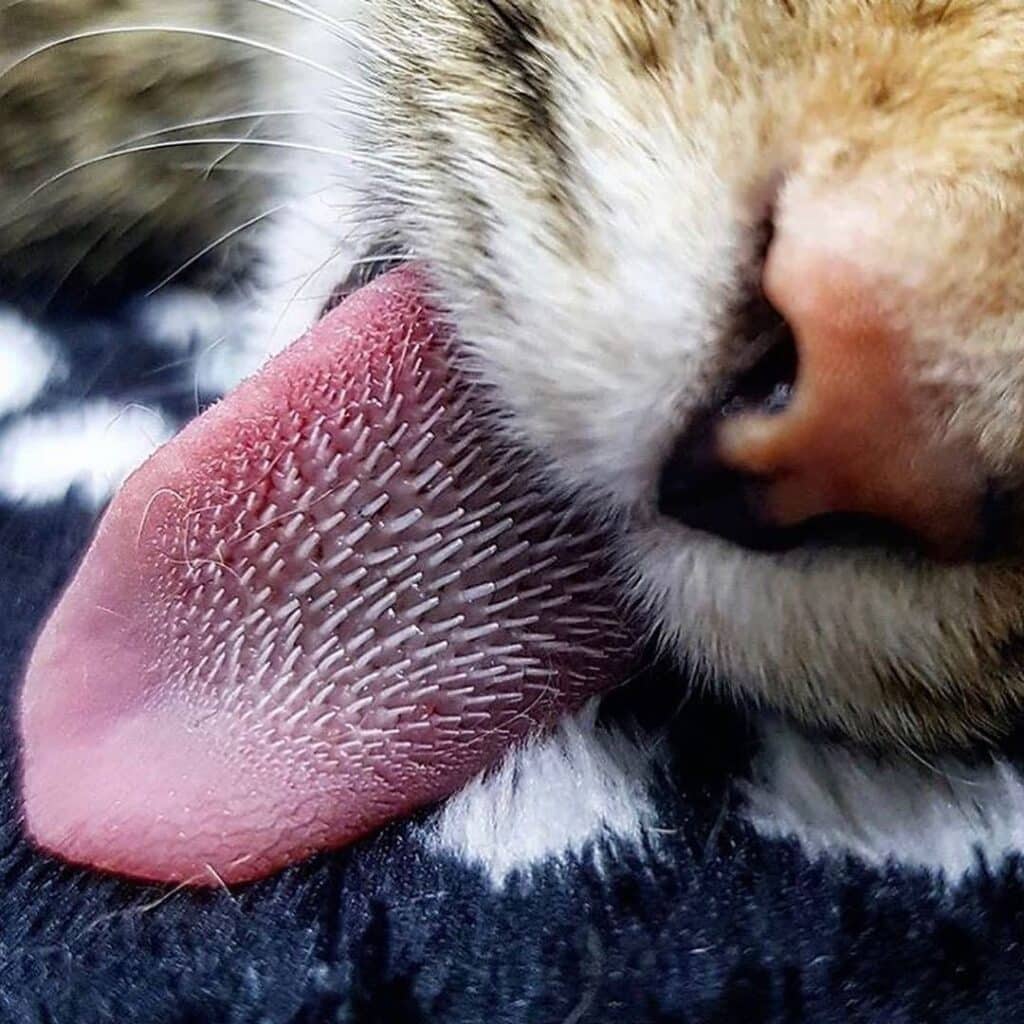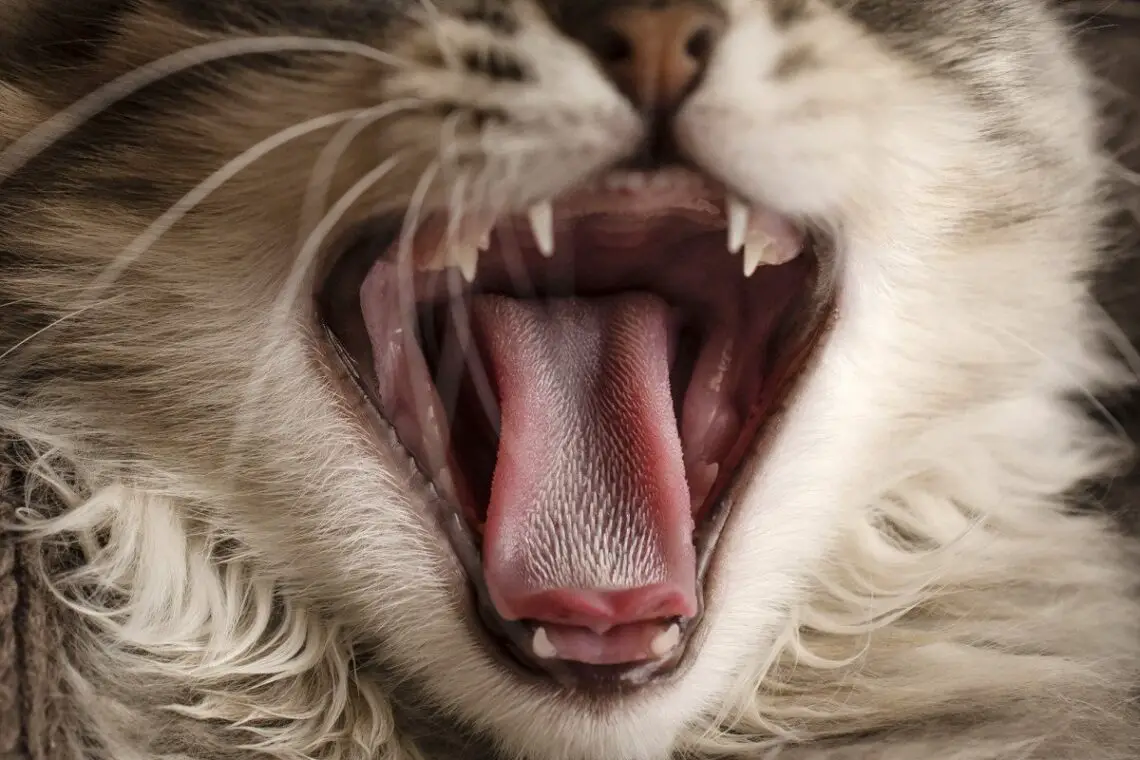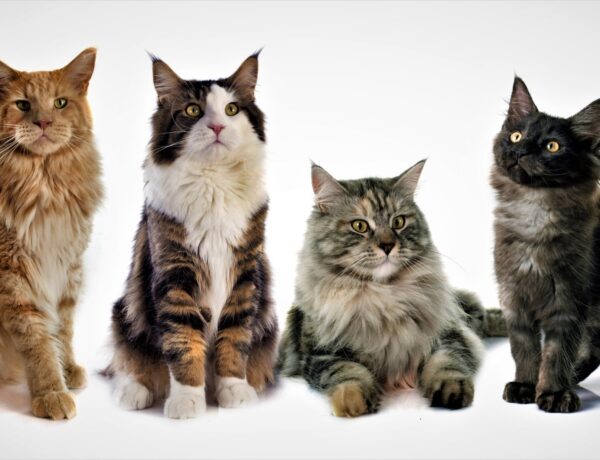Introduction
Cats are fascinating creatures with a multitude of unique characteristics that set them apart from other animals. One such intriguing feature is their rough tongues. If you’ve ever been licked by a cat, you may have noticed the coarse texture of their tongue. But have you ever wondered why cat tongues are rough? In this article, we will explore the reasons behind this peculiar trait and delve into the fascinating world of feline anatomy.
Firstly, it is important to understand that a cat’s tongue is covered in tiny, backward-facing barbs called papillae. These papillae are made of keratin, the same material found in human hair and nails. The rough texture of a cat’s tongue is a result of these papillae, which serve several purposes in a cat’s daily life.
Secondly, one of the primary functions of a cat’s ragdoll tongue is grooming. Cats are known for their meticulous self-cleaning habits, and their rough tongues play a crucial role in this process. The barbs on their tongues act as natural combs, helping to remove dirt, debris, and loose fur from their coats. As cats groom themselves, their tongues effectively remove any tangles or knots, keeping their fur clean and well-maintained.

Is it normal for a cat’s tongue to feel like sandpaper?
A cat’s tongue feels rough because it is covered with a layer of tiny backward-facing barbs known as papillae. They are different lengths – the ones in the centre being the longest – and they fulfil several very important functions. Cats use their rough tongues to strip every morsel of meat off the bones of their prey.
Yes, it is completely normal for a cat’s tongue to feel like sandpaper. In fact, a cat’s tongue is one of its most unique and fascinating features. Unlike the smooth and soft tongues of other animals, a cat’s tongue is covered in tiny, backward-facing barbs called papillae. These papillae are made of keratin, the same material that makes up our hair and nails. When a cat licks something, these barbs help to remove dirt, debris, and loose fur from their coat.
The rough texture of a cat’s tongue also serves another important purpose. It helps them to groom themselves effectively. When a cat licks its fur, the barbs on its tongue act like a natural comb, removing tangles and keeping their coat clean and well-maintained. This self-grooming behavior is not only important for a cat’s hygiene but also for their overall well-being.
Additionally, a cat’s rough tongue is also beneficial for other reasons. For example, when a cat licks its fur, the barbs on its tongue stimulate the production of natural oils from their skin. These oils help to keep their fur moisturized and provide a layer of protection against the elements. Furthermore, the rough texture of a cat’s tongue also aids in their eating habits. It helps them to scrape meat off bones and clean their whiskers after a meal.
So, while a cat’s tongue may feel rough and sandpaper-like to us, it is perfectly normal and serves several important functions for our feline friends. It is just one of the many fascinating adaptations that make cats such unique and incredible creatures.
Why are cats tongues rough and dogs smooth?
Cats are solitary hunters, but are also small enough to be prey for other animals, so grooming is important to minimise their own scent and make them harder to detect. Dogs evolved from pack-hunting wolves and grooming isn’t so important, so they have ordinary, smooth tongues. Read more: Can cats smile?
Cats and dogs are two of the most popular pets around the world. While they both have tongues, there is a noticeable difference in their texture. Cats have rough tongues, while dogs have smooth tongues. This difference in texture is due to the unique adaptations of their tongues to meet their specific needs.
Cats have rough tongues that feel like sandpaper when they lick you. This rough texture is caused by tiny, backward-facing barbs called papillae that cover the surface of their tongues. These papillae are made of keratin, the same material that makes up our hair and nails. The papillae on a cat’s tongue serve several purposes. They help cats groom themselves by removing dirt, debris, and loose fur from their coats. The barbs also aid in the consumption of food by acting as a natural comb, helping to remove meat from bones or scrape flesh off prey.
Dogs, on the other hand, have smooth tongues that feel much softer when they lick you. Unlike cats, dogs do not have papillae on their tongues. Instead, their tongues are covered in a layer of specialized cells called epithelial cells. These cells are smooth and flat, allowing dogs to lap up water more efficiently. The smooth surface of a dog’s tongue also makes it easier for them to eat and drink without getting food or water stuck to their tongues.
So, why do cats have rough tongues while dogs have smooth tongues? The answer lies in their evolutionary history and their different dietary needs. Cats are obligate carnivores, which means they rely solely on meat for their nutritional needs. Their rough tongues are perfectly adapted for tearing meat and grooming their fur. Dogs, on the other hand, are omnivores and have a more varied diet. Their smooth tongues are better suited for lapping up water and eating a wider range of foods.
Should my cat’s tongue be rough?
The reason a cat’s tongue is so rough is due to all the backwards facing spines (or papillae) that run along it. These papillae have all sorts of fantastic uses. They are great for stripping meat from bones, allowing them to extract the maximum nutrition from their prey in the most quick and efficient way.
Yes, it is completely normal for a cat’s tongue to be rough. In fact, a rough tongue is one of the defining characteristics of a cat’s anatomy. The rough texture of a cat’s tongue is due to the presence of tiny, backward-facing barbs called papillae. These papillae serve several important functions for a cat.
Firstly, the rough texture of a cat’s tongue helps them groom themselves effectively. When a cat licks its fur, the papillae on its tongue act like a natural comb, removing dirt, debris, and loose hair from their coat. This self-grooming behavior is not only important for maintaining a clean and healthy coat, but it also helps to stimulate blood flow and distribute natural oils throughout the fur, keeping it soft and shiny.
Additionally, a cat’s rough tongue is also beneficial for their overall health. The barbs on their tongue help to remove parasites, such as fleas and ticks, from their fur. By licking themselves, cats can effectively remove these pests and prevent infestations. Furthermore, the rough texture of their tongue aids in the consumption of food. When a cat eats, their tongue helps to scrape meat off bones and remove flesh from prey.
It is important to note that while a cat’s rough tongue is normal, excessive grooming or licking can be a sign of underlying health issues, such as allergies or skin irritations. If you notice your cat excessively grooming or licking themselves to the point of causing bald patches or skin lesions, it is recommended to consult with a veterinarian to rule out any potential health concerns.
Why do cats have coarse tongues?
The reason a cat’s tongue is so rough is due to all the backwards facing spines (or papillae) that run along it. These papillae have all sorts of fantastic uses. They are great for stripping meat from bones, allowing them to extract the maximum nutrition from their prey in the most quick and efficient way.
Cats have long been known for their unique and fascinating characteristics, one of which is their coarse tongues. Unlike the smooth and soft tongues of other animals, cats have tongues that feel rough to the touch. This distinctive feature serves several important purposes in a cat’s life.
Firstly, the rough texture of a cat’s tongue is due to the presence of tiny, backward-facing barbs called papillae. These papillae are made of keratin, the same material that makes up human hair and nails. The barbs on a cat’s tongue serve as a grooming tool, allowing them to clean their fur efficiently. When a cat licks its fur, the barbs catch onto loose hair, dirt, and debris, removing them from the cat’s coat. This self-grooming behavior helps cats maintain a clean and healthy coat.
Secondly, the rough texture of a cat’s tongue also aids in their ability to drink water. When a cat drinks, it curls its tongue backward to form a spoon-like shape. As the cat dips its tongue into the water, the barbs on its tongue help to create a column of water that is drawn up into the cat’s mouth. This unique drinking method allows cats to lap up water quickly and efficiently.
Additionally, the rough texture of a cat’s tongue plays a role in their eating habits. Cats are carnivores, and their tongues are designed to help them consume meat. The barbs on their tongues act as natural tools for tearing and shredding meat, making it easier for them to eat and swallow their food.
The coarse tongues of cats serve multiple purposes in their daily lives. From grooming their fur to drinking water and consuming food, a cat’s rough tongue is a remarkable adaptation that contributes to their overall well-being.
Should you let your cat lick you?
As long as you’re sure it’s not developed into an anxious, compulsive behavior, then it’s fine to let your cat lick you! However, if you have an open wound, it’s best to keep your cat from licking in that area. Cats carry bacteria in their mouths, which can lead to an infection in an open wound.
Many cat owners have experienced the sensation of their furry friend giving them a gentle lick. While some may find it endearing, others may wonder if it is safe or hygienic to let their cat lick them. The truth is, there are pros and cons to consider when deciding whether or not to allow your cat to lick you.
On one hand, allowing your cat to lick you can be a sign of affection and bonding. Cats groom each other as a way of showing love and trust, so when your cat licks you, it may be their way of expressing these feelings. It can also be a comforting and soothing experience for both you and your cat, as the act of licking releases endorphins that promote relaxation.
On the other hand, there are potential risks associated with letting your cat lick you. Cats have rough tongues that are designed to remove dirt and debris from their fur, but this can also transfer bacteria and parasites to your skin. If your cat has recently been outside or has come into contact with other animals, there is a chance that they could be carrying harmful pathogens that could make you sick.
Additionally, some cats may have a habit of licking themselves excessively, which can lead to hairballs. If your cat ingests too much fur while grooming, it can accumulate in their digestive system and cause discomfort or even blockages. Allowing your cat to lick you may inadvertently encourage this behavior and increase the risk of hairball-related issues.
Ultimately, the decision of whether or not to let your cat lick you is a personal one. If you are concerned about the potential risks, it may be best to avoid allowing your cat to lick you. However, if you are comfortable with the idea and take necessary precautions, such as regularly washing your hands and ensuring your cat is up to date on vaccinations and parasite prevention, then the occasional lick may not pose a significant threat.
The rough texture on cat tongues serves multiple purposes. One of the main purposes is grooming. Cats are known for their cleanliness, and their rough tongues play a crucial role in keeping their fur clean and well-maintained. The tiny, backward-facing barbs on their tongues act as natural combs, helping to remove dirt, debris, and loose hair from their coats. This self-grooming behavior not only keeps their fur looking neat but also helps to distribute natural oils, keeping their skin healthy.
Another purpose of the rough texture is aiding in feeding. Cats are carnivores, and their tongues are designed to help them efficiently consume their prey. The roughness helps to strip meat off bones and scrape every last bit of flesh from their prey. This texture also assists in the process of lapping up water, as the barbs create a sort of spoon-like shape that helps cats drink more effectively.
In summary, the rough texture on cat tongues serves the purposes of grooming and feeding. It allows cats to keep their fur clean and well-groomed, while also aiding in the consumption of prey and the efficient intake of water.
How does the roughness of cat tongues help them in their daily activities?
The roughness of cat tongues plays a crucial role in helping them with various daily activities. One of the main benefits is grooming. Cats are known for their meticulous grooming habits, and their rough tongues are essential for this task. The tiny, backward-facing barbs on their tongues, called papillae, act like a natural comb, helping to remove dirt, debris, and loose fur from their coats. This self-grooming not only keeps their fur clean and free from tangles but also helps to distribute natural oils, keeping their skin healthy.
In addition to grooming, the roughness of cat tongues aids in their feeding habits. When cats lap up water or consume food, their tongues create a unique mechanism. As they extend their tongues to drink or eat, the papillae on their tongues act as a scoop, allowing them to efficiently capture liquid or food. The rough texture helps to create surface tension, enabling cats to lap up water more effectively and consume food with precision.
What are the unique characteristics of cat tongues that make them rough?
Cat tongues are known for their unique rough texture, which is a result of several characteristics. Firstly, the surface of a cat’s tongue is covered in tiny, backward-facing barbs called papillae. These papillae are made of keratin, the same material found in human hair and nails. The papillae on a cat’s tongue are much longer and more numerous than those found in other animals, giving their tongues a rough and sandpaper-like feel.
The roughness of a cat’s tongue is also due to the presence of small, hollow structures called filiform papillae. These papillae are responsible for the abrasive texture of a cat’s tongue. They not only help in grooming by removing dirt and debris from the cat’s fur, but also assist in the consumption of food. The rough surface of a cat’s tongue acts like a natural comb, allowing them to effectively clean their fur and remove tangles and loose hair.
The unique characteristics of cat tongues make them highly efficient grooming tools. The rough texture helps cats to clean themselves by removing dirt, debris, and parasites from their fur. Additionally, the papillae on a cat’s tongue play a crucial role in their grooming routine by distributing saliva evenly across their fur. This saliva acts as a natural conditioner, keeping their coat clean, shiny, and well-maintained.
Are there any specific advantages or benefits that cats gain from having rough tongues?
Yes, there are several specific advantages and benefits that cats gain from having rough tongues. One of the main advantages is that the rough texture of their tongues allows them to groom themselves effectively. The tiny, backward-facing barbs on their tongues act like a natural comb, helping to remove dirt, debris, and loose fur from their coats. This self-grooming not only helps to keep their fur clean and free from tangles, but it also stimulates the production of natural oils in their skin, which helps to keep their coats healthy and shiny.
In addition to grooming, the roughness of cat tongues also aids in their feeding behavior. When cats eat, their tongues play a crucial role in removing meat from bones or lapping up liquids. The rough texture helps to strip meat from bones more efficiently, allowing cats to consume their prey more effectively. It also helps them to lap up liquids by creating a sort of spoon-like shape with their tongues, allowing them to drink more efficiently.
Can the roughness of cat tongues be replicated or imitated for any practical applications?
The roughness of cat tongues is a fascinating characteristic that has caught the attention of scientists and engineers alike. Researchers have been studying cat tongues to understand their unique texture and explore potential practical applications. One area where the replication of cat tongue roughness could be beneficial is in the field of grooming tools.
By imitating the rough texture of cat tongues, scientists have developed brushes and combs that are more effective in removing dirt, debris, and loose hair from various surfaces. These grooming tools mimic the action of a cat’s tongue, allowing for more efficient cleaning. Additionally, the roughness of cat tongues could also be replicated in the design of adhesive materials.
By understanding the microstructure of cat tongues, scientists have been able to create adhesives that can stick to surfaces even in wet conditions. This could have significant practical applications in industries such as healthcare, where the ability to securely adhere to wet surfaces is crucial. Overall, the replication of cat tongue roughness holds great potential for practical applications in grooming tools and adhesive materials, offering improved efficiency and performance.

Conclusion
Cat tongues are rough due to the presence of tiny, backward-facing barbs called papillae. These papillae are made of keratin, the same material that makes up human hair and nails. The rough texture of a cat’s tongue serves several important purposes, including grooming, aiding in the consumption of food, and enhancing their sense of touch.
Firstly, the rough texture of a cat’s tongue is essential for grooming. Cats are known for their cleanliness and spend a significant amount of time grooming themselves. The backward-facing barbs on their tongues act like a comb, helping to remove dirt, debris, and loose fur from their coats. This self-grooming behavior not only keeps their fur clean and free from tangles but also helps to distribute natural oils produced by their skin, keeping their coat healthy and shiny.
In addition to grooming, a cat’s rough tongue also aids in the consumption of food. When a cat licks its fur, the barbs on its tongue help to remove any remaining food particles from their coat. These particles are then ingested, and the rough texture of the tongue helps to scrape meat off bones or remove flesh from prey. This unique adaptation allows cats to efficiently consume their food, ensuring they receive the necessary nutrients for their survival.
Lastly, the rough texture of a cat’s tongue enhances their sense of touch. The papillae on their tongues are highly sensitive and contain numerous nerve endings. This sensitivity allows cats to detect subtle changes in their environment, such as the movement of prey or the texture of surfaces they walk on. It also enables them to groom themselves with precision, ensuring they can reach every part of their body and maintain their cleanliness.
The roughness of a cat’s tongue is a remarkable adaptation that serves multiple purposes. From grooming to aiding in food consumption and enhancing their sense of touch, the unique structure of a cat’s tongue plays a crucial role in their overall well-being and survival in the wild.





No Comments